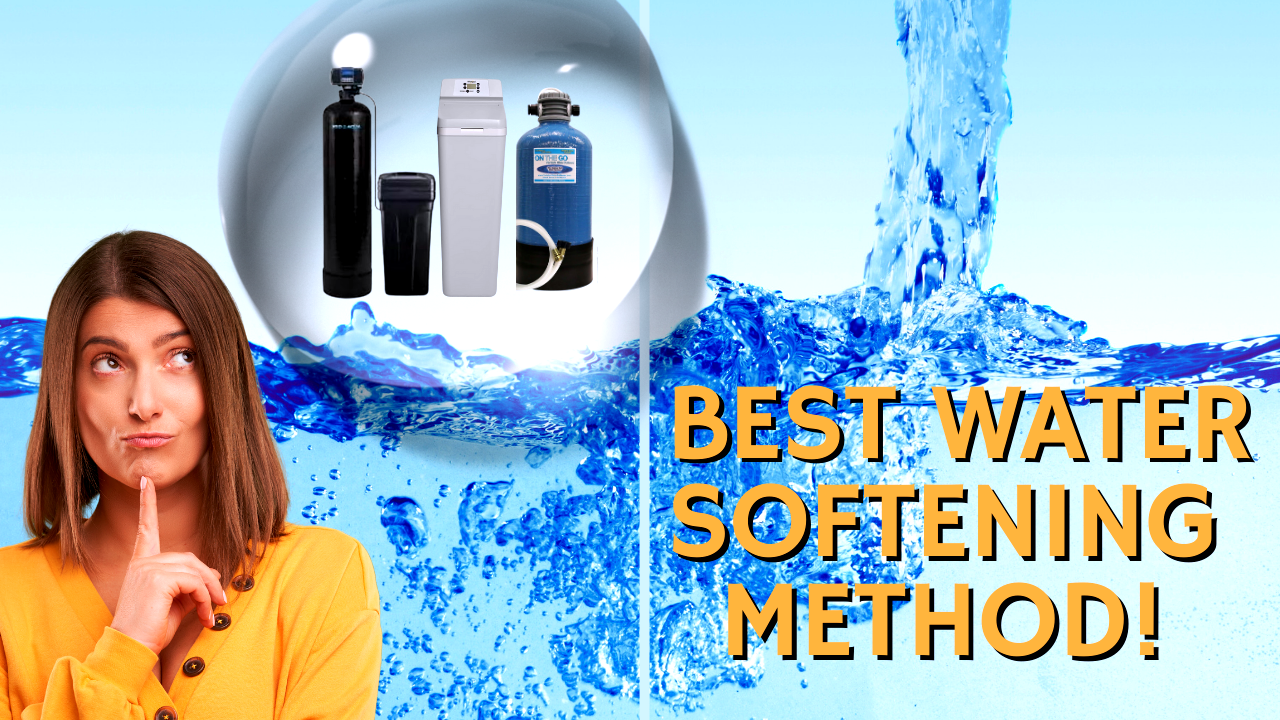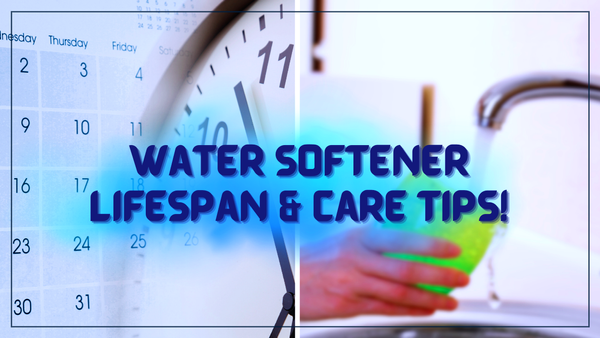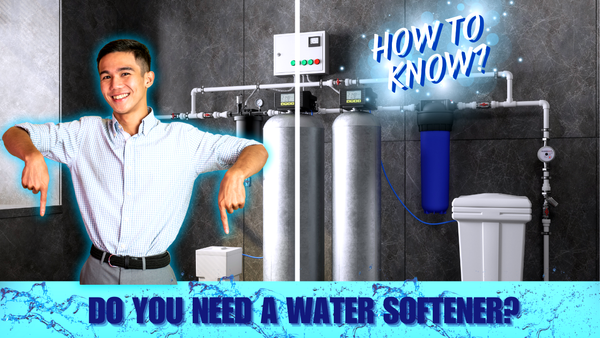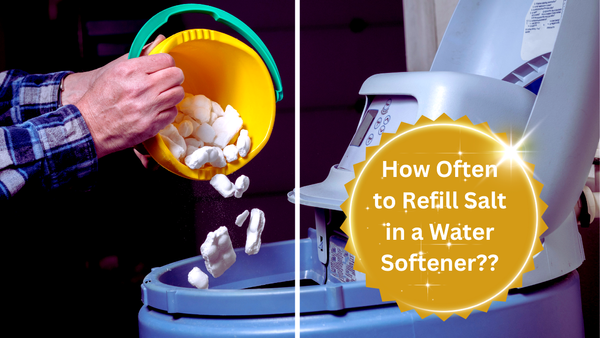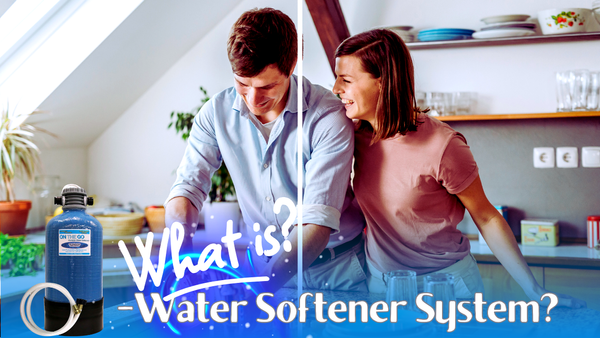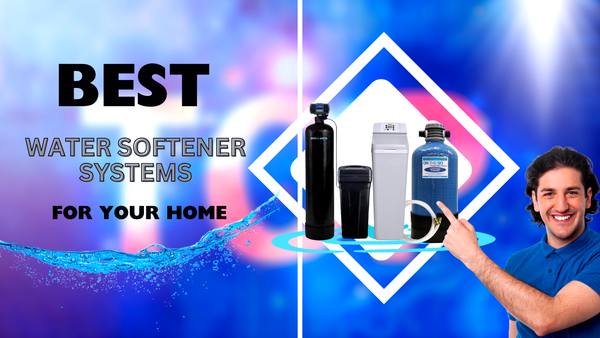Key Takeaways:
- Understanding Different Water Softening Methods: Learn about salt-based, salt-free, magnetic, and reverse osmosis systems.
- Pros and Cons: Discover the advantages and disadvantages of each method.
- Choosing the Right System: Get insights on selecting the best water softener.
Water softening is the process of removing hardness-causing minerals like calcium and magnesium from your water supply. Hard water can cause scale buildup in pipes, dry skin, and inefficient household appliances. Knowing which is the best water softening method will save you money and improve your water quality.
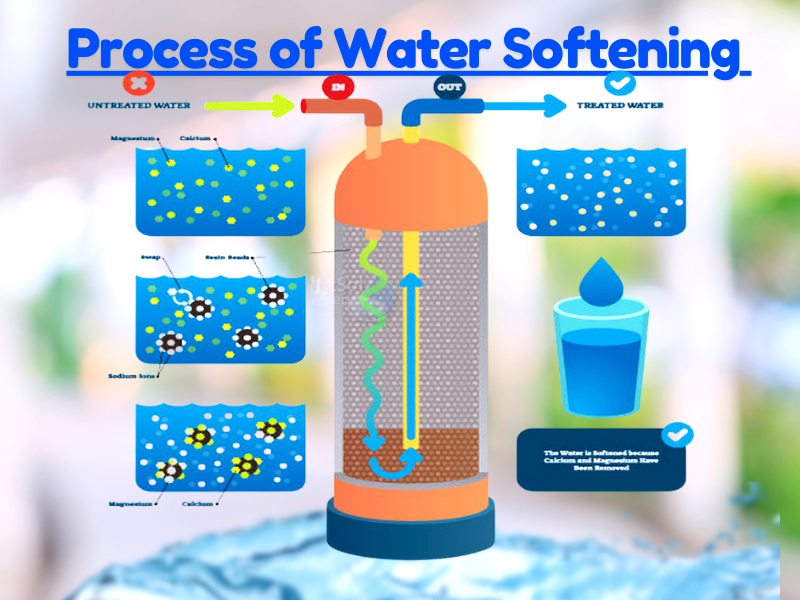
What is Hard Water?
Hard water has high levels of calcium and magnesium ions. These minerals can cause scale buildup in pipes and appliances, reducing efficiency and life. Hard water also makes it hard to lather soap and can cause dry skin and dull hair.
Why Soften Water?
Softening water prevents scale buildup, extends appliance life, and makes soaps and detergents more effective. Soft water also makes your skin feel smoother and hair shinier. Knowing the benefits of softened water will help you decide which water-softening method is for you.
Salt-Based Water Softeners
Ion exchange water softeners, also known as salt-based water softeners, use a process called ion exchange to remove hardness ions from water. In this process, calcium and magnesium ions are replaced with sodium ions. The system has a resin tank filled with beads that attract and hold onto the hardness ions.
How Salt-Based Systems Work
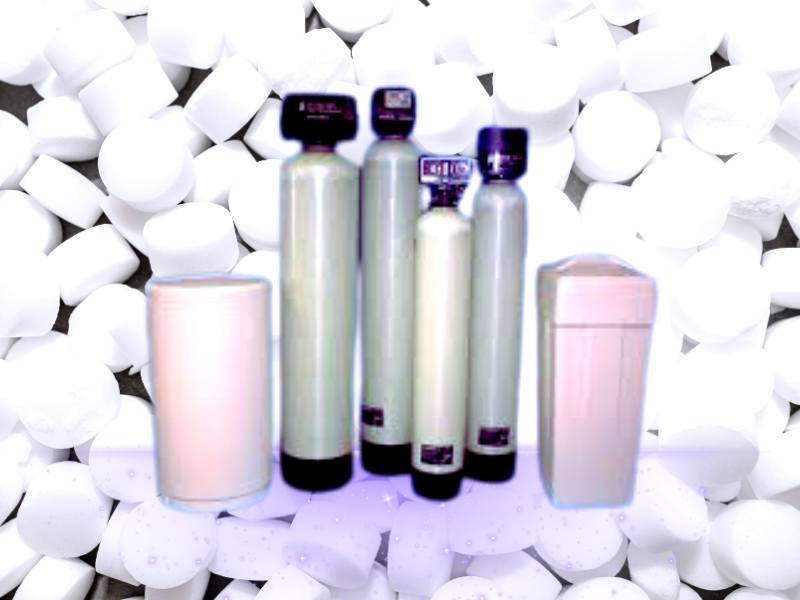
Salt-based systems have a brine tank that holds a salt solution. During the regeneration cycle, the brine solution flushes the resin beads, replacing the hardness ions with sodium ions. This ensures a continuous supply of soft water.
Pros of Salt-Based Water Softeners
Salt-based water softeners are highly effective at removing hardness ions, providing consistently soft water. They can extend the life of appliances and plumbing systems by preventing scale buildup. These systems are also relatively easy to maintain.
Cons of Salt-Based Water Softeners
One downside of salt-based water softeners is the need to add salt regularly. This can be inconvenient and costly over time. Additionally, the sodium ions added to the water may not be suitable for people on low sodium diets.
Salt-Free Water Softeners
Salt-free water softeners, also known as water conditioners, do not remove hardness ions. Instead, a salt-free water softener alters the structure of the minerals so they do not form scale. One popular method is template-assisted crystallization (TAC), which converts hardness ions into microscopic crystals.
How Salt-Free Systems Work
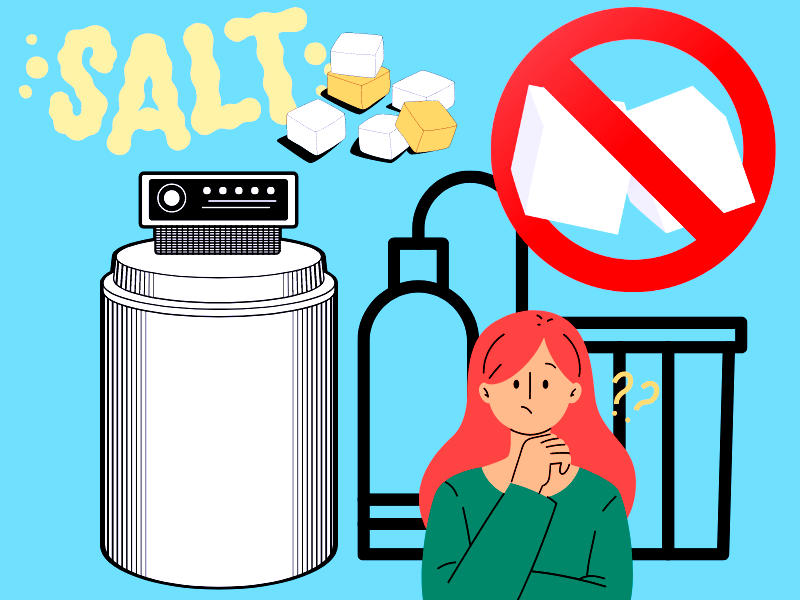
Salt-free systems use a catalytic media to change the structure of calcium and magnesium ions. These systems do not require a brine tank or regeneration cycle, making them low maintenance. They are also environmentally friendly, as they do not discharge salt into the wastewater.
Pros of Salt-Free Water Softeners
Salt-free water softeners are easy to install and maintain. They do not require salt, making them a cost-effective and eco-friendly option. These systems are also suitable for people on low-sodium diets.
Cons of Salt-Free Water Softeners
Salt-free systems do not remove hardness ions, so they may not be as effective at preventing scale buildup in all situations. They may also be less effective in areas with extremely hard water.
Magnetic Water Softeners
Magnetic water softeners use magnetic fields to alter the structure of hardness ions. These systems are installed on the outside of your water pipes and do not require any plumbing modifications.
How Magnetic Systems Work
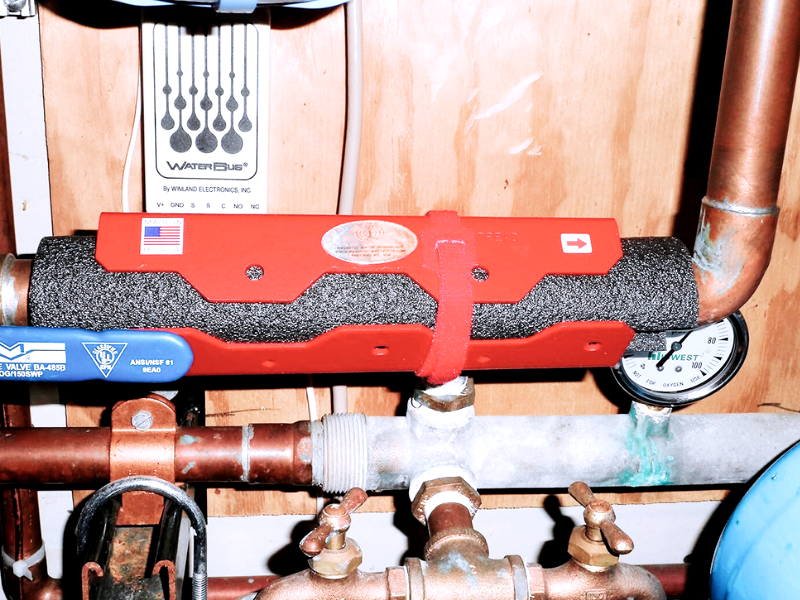
Magnetic water softeners create a magnetic field that changes the structure of calcium and magnesium ions. This prevents the minerals from forming scale deposits. These systems are easy to install and do not require any maintenance.
Pros of Magnetic Water Softeners
Magnetic water softeners are inexpensive and easy to install. They do not require salt or chemicals, making them an eco-friendly option. These systems also do not need any maintenance.
Cons of Magnetic Water Softeners
The effectiveness of magnetic water softeners is debated. Some users report significant improvements, while others see little to no change. These systems may not be suitable for areas with very hard water.
Reverse Osmosis Systems
Reverse osmosis (RO) systems use a semi-permeable membrane to remove dissolved solids, including hardness ions, from water. These systems are often used in conjunction with other water-softening methods to provide high-quality drinking water.
How Reverse Osmosis Systems Work
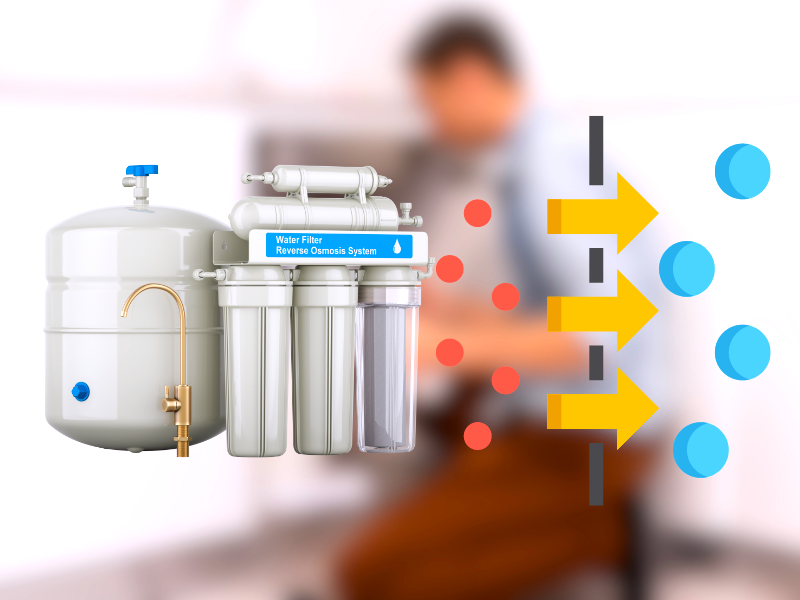
In a reverse osmosis system, water is forced through a semi-permeable membrane that filters out dissolved solids, including calcium and magnesium ions. The filtered water is collected in a storage tank while the impurities are flushed away.
Pros of Reverse Osmosis Systems
Reverse osmosis systems provide high-quality drinking water by removing a wide range of contaminants. They are effective at reducing water hardness and improving water taste. These systems are also relatively low maintenance.
Cons of Reverse Osmosis Systems
Reverse osmosis systems can be expensive to install and maintain. They also produce a significant amount of wastewater, which can be a concern in areas with water scarcity. Additionally, these systems may require a pre-filter to remove larger particles.
Dual Tank Water Softeners
A dual-tank water softener features two resin tanks, allowing for a continuous soft water supply. When one tank is regenerating, the other tank is in service, ensuring that you always have access to soft water.
How Dual Tank Systems Work
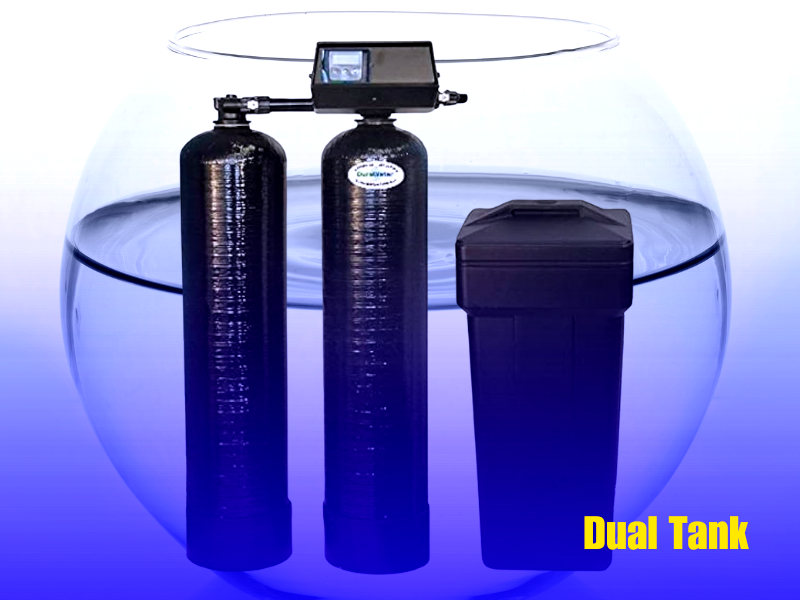
Dual tank systems use the same ion exchange process as single tank systems. However, they have two resin tanks that alternate between service and regeneration. This ensures a continuous supply of soft water, even during the regeneration cycle.
Pros of Dual Tank Water Softeners
Dual tank water softeners provide a continuous supply of soft water, making them ideal for households with high water usage. They are also more efficient, as they regenerate based on actual water usage rather than a set schedule.
Cons of Dual Tank Water Softeners
Dual tank systems can be more expensive to purchase and install compared to single tank systems. They also require more space, which may be a concern for some households.
Choosing the Right Water Softener
When selecting a water softener system, consider factors such as water hardness, household water usage, and budget. Each method has its advantages and disadvantages, so it’s important to choose the one that best meets your needs.
Water Hardness and Usage
The hardness of your water and your household’s water usage are key factors in choosing a water softener. For extremely hard water, an ion exchange water softener or a dual-tank system may be the best option. For moderate hardness, a salt-free or magnetic system may be sufficient.
Budget and Maintenance
Consider your budget and the maintenance requirements of each system. Salt-based systems require regular salt replenishment, while salt-free and magnetic systems are low maintenance. Reverse osmosis systems can be expensive to install and maintain but provide high-quality drinking water.
Environmental Impact

The environmental impact of each water softening method is another important consideration. Salt-based systems discharge salt into the wastewater, which can be harmful to the environment. Salt-free and magnetic systems are more eco-friendly options.
Health Considerations
If you are on a low-sodium diet, a salt-free or reverse osmosis system may be the best choice. Salt-based systems add sodium to the water, which may not be suitable for everyone.
Installation and Space
Consider the installation requirements and space needed for each system. Dual tank systems require more space, while magnetic systems are easy to install and do not require any plumbing modifications.
Water Quality
The quality of your water is another important factor. Reverse osmosis systems provide high-quality drinking water by removing a wide range of contaminants. Salt-based and salt-free systems improve water quality by reducing hardness.
Summary
Choosing the best water-softening method depends on various factors, including water hardness, household water usage, budget, and health considerations. Salt-based systems are highly effective but require regular maintenance. Salt-free and magnetic systems are low maintenance but may be less effective in areas with very hard water. Reverse osmosis systems provide high-quality drinking water but can be expensive to install and maintain. By understanding the pros and cons of each method, you can make an informed decision that best meets your needs. To keep up with the latest water filter tips and offers, subscribe to our newsletter today!
FAQ
What is the difference between salt-based and salt-free water softeners?
Salt-based water softeners use ion exchange to remove hardness ions while salt-free water softeners alter the structure of the minerals to prevent scale buildup. Salt-based systems require regular salt replenishment while salt-free systems are low maintenance.
Are magnetic water softeners effective?
Magnetic water softeners are debatable. Some users reported significant improvements while others saw no change at all. These systems may be good for areas with moderate water hardness.
Can reverse osmosis soften water?
Reverse osmosis can reduce water hardness by removing dissolved solids including calcium and magnesium ions. Often used with other water-softening methods to produce high-quality drinking water.
